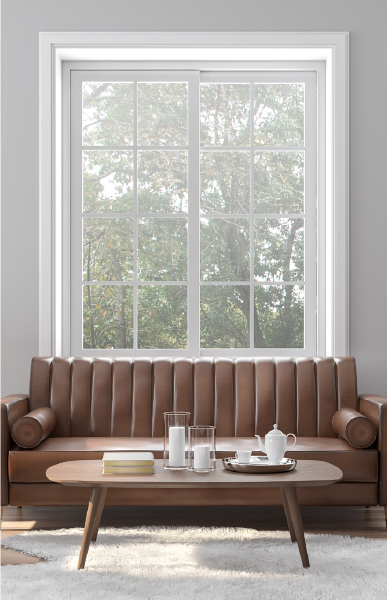Growing up, my handy parents would dedicate an entire weekend to preparing our older, "historic" home for the winter. Our quaint yet endlessly drafty house was transformed into a charming and cozy home in just two days. There is even an official name for this process, "winterizing."
You winterize your home to help keep the cold and chill out and the warm and toasty inside. Not only is it more comfortable for everyone, it's also a great way to save on energy costs.
Getting your home ready for winter isn't just for older homes, newer homes can benefit too. And, you don't have to be home improvement aficionados either. Most of these steps are low budget and easy to do.
Let's do this, weekend warriors!
Outside:
Clean your downspouts. Breaking out the tall ladder isn't the most convenient thing, but it beats melting snow and ice overflowing. Better yet, install guards, so, you don't have to break out that ladder again.
Clean and store your yard tools for the winter. Do yourself a favor and take care of your tools. You will save yourself a lot of money by not having to replace them every year. Gardening tools, hoses, and lawnmowers will all benefit from a good wipe down before winter storage. You will help to prevent rust and ensure your tools are safely stored away from the elements. Bonus tip, if you have a gas propelled mower, be sure to drain the gas out before storing it.
Install storm windows. If you have an older home, this can be a bit of work. But, ultimately, worth it. It's another barrier between your home and the cold air outside. Bonus if you have newer or replacement windows, which don't require much to prepare for winter.
Eventually, replacing older windows and doors will make this one less winterizing task for the future. Adding, energy-efficient windows like double or triple pane windows, insulated doors, and insulated garage doors will significantly improve the energy efficiency of your home.
Fill exterior holes. Take a walk around the perimeter of your house. You will notice quite a few openings and areas where things inside your home connect to the outside. Consider your faucets, vents, seams, and cracks around window or door frames. These gaps, cracks, and crevice's can quickly be filled in with a spray foam insulation. The process takes just minutes. Not only will it help with insulation, but it will help keep the creepy crawlers outside where they belong.
If you have older windows and notice cracks around the frames, you can use putty caulk to seal the entire window. Any crack, even a tiny one, can benefit from the caulk.
Inside:
Set your ceiling fans to go in a clockwise direction. Look for a switch right on your fan unit by the motor. Clockwise airflow will ensure the hot air is pushed down where it's needed.
Plug up the fireplace. If you're not using your fireplace, consider plugging it up with a chimney balloon. These ingenious devices are just more durable balloons that expand to fill in the chamber of your chimney, keeping out drafts and cold air. Just be sure to remove it if you decide you want to use your fireplace.
Keep your thermostat at is 68ºF. Why 68ºF? It's warm enough to be comfortable, and it won't freeze the pipes. It's also an excellent steady-state temperature. Contrary to popular thought, dropping the thermostat down while you're at work isn't going to help with energy efficiency. Maintaining is better for your system.
Change your furnace filters. Dirty filters make your system work harder. Aim to change your filters every 6-8 weeks over the winter. While you're at it, have your furnace serviced before winter weather hits to make sure it's ready for the season.
Pay attention to your water heater. Like your thermostat, there is an optimal temperature for your water heater. The Consumer Product Safety Commission recommends 120 degrees for most units.
While you're down there, if your unit is close to an exterior wall, wrap a blanket around it. This extra layer will help your water heater keep the water hot at a tough time of year for heat.
Door snake your exterior doors. Doors that lead outside are forever drafty and cold areas in our homes. Amp up the seal with a door snake. These genius contraptions slide onto the bottom of your door and help to seal off that under the door cold zone. You can find them at most home improvement stores.
Winter windows. Check your window locks. It sounds simple, but it's surprising how often we leave a window unlocked. Making sure everything is securely locked also means it's safely sealed and ready to keep that cold air out. Your final step; trade out those gauzy sheers for a more substantial and insulated curtain. Heavier lined fabrics are beneficial in keeping the area around your windows insulated.
And just like that, you've winterized your home. Reap the rewards with a cup of hot cocoa.

